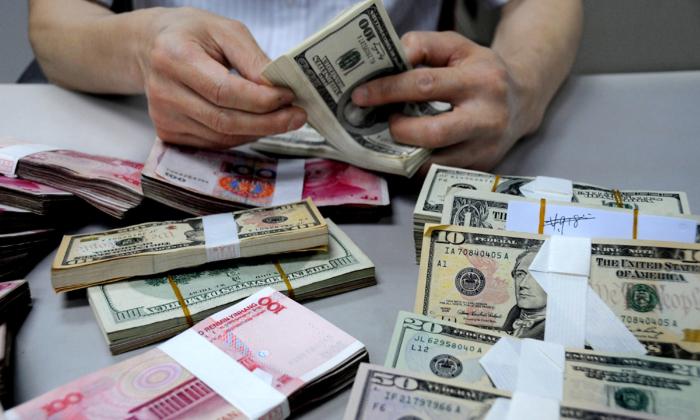Recent media reports on spring planting in China’s Raohe County have drawn attention to the challenges faced by Chinese farmers as the cost of growing grain rises and agricultural production sags due to the aging of the country’s population.
Raohe County, in China’s Heilongjiang Province, was once recognized as China’s foremost grain-producing county. In 1993, it was designated as China’s soybean production capital. Thirty years later, Raohe’s grain output is down, and it is losing an increasing number of farmers to more lucrative work elsewhere.
In April, the Heilongjiang Provincial Bureau of Statistics released a survey report on Raohe County’s preparation for spring farming. The survey was detailed on the province’s website and reported by Chinese state media.
According to the research, reported by Chinese media The Paper, the cost of agricultural supplies, labor, land, and rent have all risen, increasing the cost of grain production. Combined with other rising expenses, that makes farming increasingly unattractive. The annual income from an entire farm family may not match the income of just one of the many migrant workers who power China’s urban factories.
High Costs, Low Yields
The average net profit of China’s three major grain crops (rice, wheat, and corn) was only 47 yuan ($6.8) per mu in 2020, according to a research report by China Agricultural University published in July of 2022. The mu is a Chinese agricultural unit equivalent to about .165 acres.The report detailed the profit and loss cycle of the agricultural sector, fueled by interventionary measures, over the past decades.
From 2004 to 2011, the average net profit of China’s three main grains increased from 196.5 yuan ($28.6) per mu to 250.8 yuan ($36.5) per mu after a minimum purchase price policy was implemented. After 2014, the minimum purchase prices of rice and wheat was steadily lowered. In 2016, China canceled its policy of stockpiling corn in temporary corn reserves and the price fell. Coupled with the rising cost of grain planting, China’s grain income entered a stage of loss. From 2016 to 2019, the average net profits of China’s three main grains were all negative.

In 2020, affected by the COVID-19 pandemic and other factors, grain prices rose rapidly, and the average net profit of China’s three main grains recovered to 47 yuan ($6.8) per mu.
The boost was only temporary however, and soaring costs since that time have heavily impacted farming returns.
According to the report, from 2004 to 2020, the average input costs of seeds, fertilizers, and pesticides for China’s three main grains increased by 1.35 times. The average land cost increased by 3.42 times and labor costs increased by 1.92 times, to almost 37 percent of total costs in 2020. Meanwhile, mechanical operation costs increased by 3.88 times to 13.8 percent of total costs in 2020. Finally, drainage and irrigation fees increased by 59 percent. All of these factors contributed to the squeezing of farmers’ profits.
Planting costs have soared, making it unprofitable for small farmers to farm.
Small farmers still make up the main body of rural production in China. The People’s Daily report said that “the average person has 1.3 mu of land; the average household has no more than 10 mu of land.” This reliance on small farmers is a long-term reality for China’s agriculture industry, the report said.
Leaving the Farm for the City
The report noted that due to the low yield from farming, many of the young and middle-aged in the rural labor force are leaving the farm for the city. That means that the rural workforce is increasingly elderly. Along with other age-related challenges, older farmers may find it difficult to adopt new farm technology, leading to lower crop yields, quality, and smaller profits.According to a 2021 report by the Chinese Academy of Social Sciences, posted by the China Research Center on Aging, China’s rural population is facing a severe aging situation, with over 20 percent of the population aged 60 or above, and almost 14 percent of the population aged 65 or above, fully meeting criteria for an aging society.
The aging population in rural areas is affecting China’s agricultural production and operation in several ways, according to a recent research report.

According to a paper entitled “Ageing Threatens Sustainability of Smallholder Farming in China” published in February in the journal Nature, the proportion of people over 65 in rural China doubled between 2000 and 2019. The aging rural population is expected to present challenges for years to come.
Researchers found that the aging of China’s rural population reduced the country’s average farm size by 4 percent in 2019, primarily through the transfer of cropland ownership and land abandonment, posing a serious threat to food security.
An Aging Farm Population Poses Challenges
The deepening of China’s rural aging will pose severe food security challenges and environmental pollution pressures in China if no intervention is taken, the report predicted, increasing the abandonment rate of arable land and reducing average farm size.Fang Qi, a U.K.-based financial consultant who is familiar with China’s agricultural situation, told The Epoch Times: “For years, China has relied on imports to sustain its food supply ... not only because of production but also because of the cost of importing food, such as corn, which is cheaper than growing it itself.”
Fang said that improving China’s agricultural output will take a multi-pronged approach over time in order to correct backward agricultural technology and make farming more profitable. “Agriculture is a systematic project. It’s not that a piece of land alone can produce food.”
However, he predicts that the time when importing food is cheaper than growing it may be over, underlining the necessity of revitalizing Chinese agriculture. “What’s coming next, the imported inflation as China calls it is actually a surge in import prices of grain, food, and energy.”
An opinion piece in state media People’s Daily in February warned, “Only when farmers can make money by growing grain can the country be safe.” China must increase its own grain production as soon as possible, the editorial warned, due to the growing risk of uncertainty in the global grain industry supply chain.





